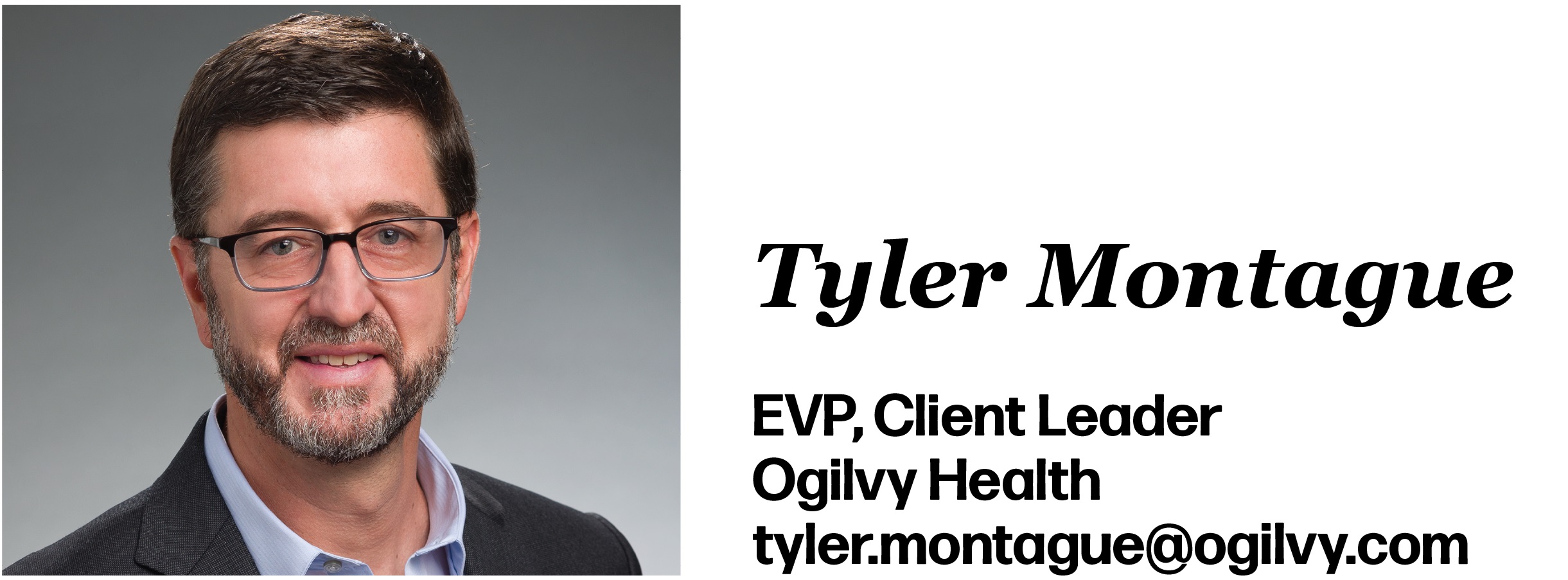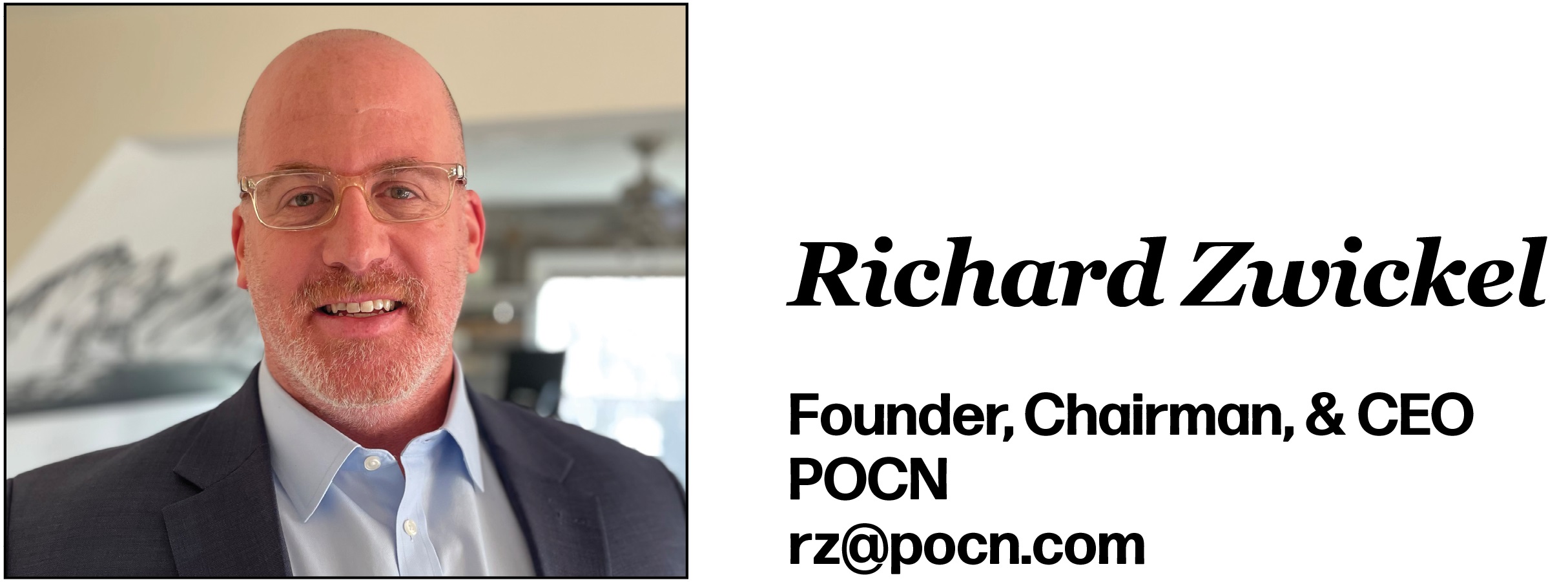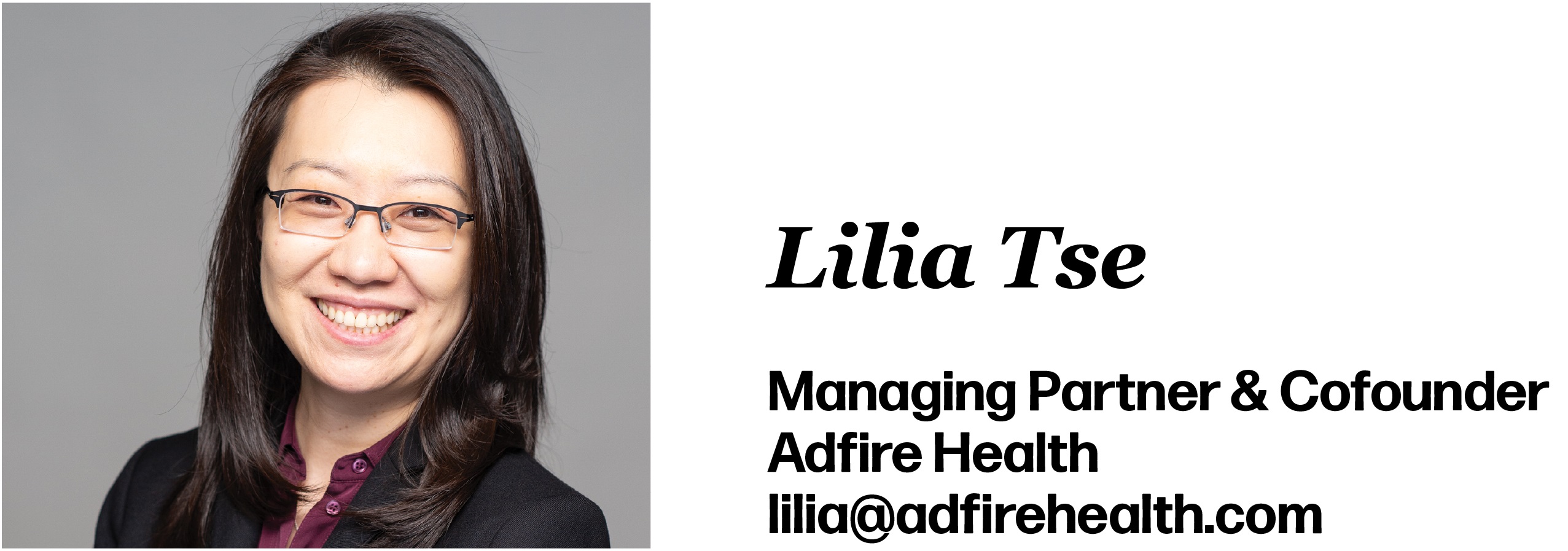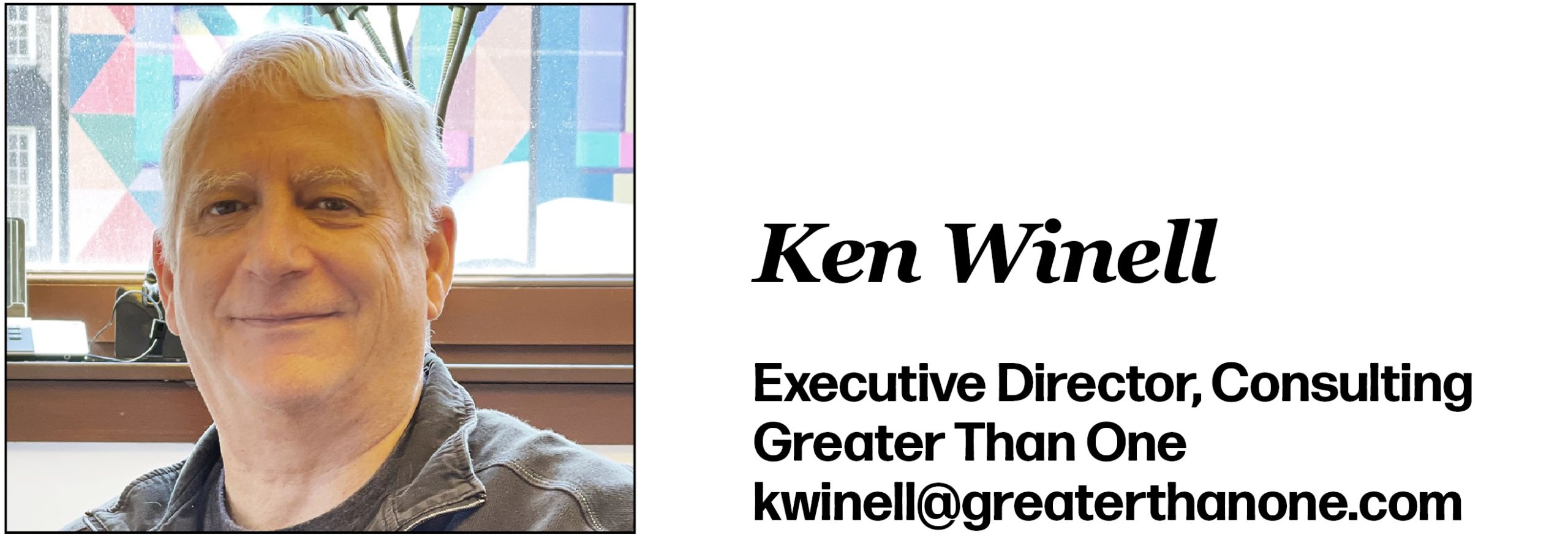Perhaps no one can perfectly predict the future—or anticipate a global pandemic that is still having reverberations on our economy, our health, and the life sciences industry to this day—but
that didn’t stop us from asking 10 industry experts to take their best shot at anticipating what to expect in 2023 and beyond. After all, they can still read the tea leaves and provide their best interpretation of what is trending, where the industry is most struggling, and what might be coming down the pike that marketers should be aware of.
So, in order to help best prepare you for what might come, we asked these 10 individuals to peer into their crystal balls and let us know:
- What will be the biggest trend(s) marketers will be talking about in 2023? Do you think this trend will prove impactful next year or in the near future or will it just be all talk?
- By the end of 2023, what do you think will be the biggest change to the industry that marketers will need to adjust to? What can marketers start doing now to prepare for this change?
- Looking further down the road—three to five years from now—what will be the biggest differences in the industry compared to now? How will these differences most impact marketers?
- If your crystal ball is too cloudy to predict the future, what are the biggest changes you hope to see within the next few years? What would you want to see the industry do differently or change and why? Can you offer suggestions for how to make your dream a reality?
 Marketing, simplified, is changing behaviors. To do so, we must first deeply understand our customers, then tell stories to drive change and impact preferences. A key area emerging is the use of artificial intelligence (AI). Marketers who can more quickly leverage AI will be leaps ahead of their competition.
Marketing, simplified, is changing behaviors. To do so, we must first deeply understand our customers, then tell stories to drive change and impact preferences. A key area emerging is the use of artificial intelligence (AI). Marketers who can more quickly leverage AI will be leaps ahead of their competition.
Marketers must prioritize building skills and capabilities to discern what I call “signal from noise,” that is, what key attitudes (signal) impact behaviors, among all the data available (noise). We need an innate curiosity to know our customers better—and how their behaviors are changing. AI must be implemented within the organization to “predict” what happens next and how marketers can respond. This will help discern what is said versus what is done with corresponding choices to prioritize what is immediately actionable.
Improving Engagement with AI
Over the past 2+ years, our customers found new ways to access information. Activities that were once table stakes (mailers, static emails, etc.) must be cast away for those that dynamically drive impact. It also requires telling compelling stories to your audiences to drive new approaches. I recommend Prezent.AI for simple storytelling and saving time. Marketers must also explore new technologies such as regenerative AI, which can help create new content simply. Plus, marketers need to evaluate how customers engage and where we can impact behaviors.
Marketers are in an enviable position to curiously evaluate a wealth of information, find key signals, and make distinct diverse choices to drive behavior to impact our customers and the patients they serve. AI must be used to simplify and enhance our engagement.
 I expect 2023 to be a year of convergence in healthcare marketing, with several “patient-centric” trends starting to collide. Greater personalization and a growing emphasis in health equity are becoming more central strategies. The need for speed is also intensifying, as the push grows to bring products and support services to market more quickly. At the same time, the industry is striving for greater marketing efficiencies and prioritizing initiatives that offer the most measurable impact.
I expect 2023 to be a year of convergence in healthcare marketing, with several “patient-centric” trends starting to collide. Greater personalization and a growing emphasis in health equity are becoming more central strategies. The need for speed is also intensifying, as the push grows to bring products and support services to market more quickly. At the same time, the industry is striving for greater marketing efficiencies and prioritizing initiatives that offer the most measurable impact.
While the current state of the economy will undoubtedly add pressure to the increasing need for overall efficiency, most of the pressure stems from a desire to drive greater patient value. I’m hopeful that marketers will continue to reframe the efficiency conversation from reducing costs to demonstrating patient value, doing more targeted programs in a way that yields better results for both patients and brands.
Establishing the Ability to Act Faster
Our energy then needs to be directed toward setting the right conditions to accelerate in a complex and regulated industry that’s not built for speed. On the agency side, teams are being redesigned to reflect more agile ways of working, and this includes greater convergence between disciplines and capabilities. Greater flexibility is being built in to iterate and respond to evolving priorities and market conditions. Omnichannel efforts are advancing. To ignite the creativity needed to maximize the impact of these changes, there should be a redesign of integrated client-agency teams that move forward under the collective charge of providing clarity, decisiveness, and focus in the process from end-to-end.
The challenges ahead are significant. So are the stakes in public health. But if we’re being honest, creativity has always been able to thrive under pressure when the constraints are clear. Which gives me reason to be optimistic about the road ahead.
 One of the biggest trends will be determining the best way to address the advanced practice providers (APPs) audience opportunity. The impact of nurse practitioners (NPs) and physician associates (PAs) on pharma’s business model is growing due to practice and institution staffing changes that have occurred over the past few years. This includes NPs and PAs broadening their scope of work in Dx and Rx to scale patient visits and enable physicians to spend more time doing procedures or higher-revenue activities. As APPs gain more responsibilities in practices, pharma will need to broaden their efforts to reach this audience.
One of the biggest trends will be determining the best way to address the advanced practice providers (APPs) audience opportunity. The impact of nurse practitioners (NPs) and physician associates (PAs) on pharma’s business model is growing due to practice and institution staffing changes that have occurred over the past few years. This includes NPs and PAs broadening their scope of work in Dx and Rx to scale patient visits and enable physicians to spend more time doing procedures or higher-revenue activities. As APPs gain more responsibilities in practices, pharma will need to broaden their efforts to reach this audience.
Another thing marketers should be aware of in 2023 is that the economic environment is likely to pose similar challenges as the pandemic did. For example, drug price sensitivities will once again take center stage and marketers should be prepared for the negative perception of marketing spend amid the high prices and financial challenges that patients/families are facing. Marketers need to get their messaging down now and it should go beyond copay support, including offering increased customer support programs. Preparation will require strategic planning and investment.
The Most Impactful Trends in Three to Five Years
Looking further down the road, there will be consolidation in marketing efforts (overall fewer channels and touchpoints). Think 1980s, ’90s, early ’00s when there were multiple reps on top of each other in offices—blunt-force promotion to docs. Eventually, live meetings and reps were contracted. We’ve replicated that essentially with non-personal promotion. It may be time to now contract into even more efficient approaches, solving marketing needs by reduction versus addition—but better. Pricing pressure and overall changes to healthcare will accelerate this.
 The forced physical disconnection caused by the COVID-19 pandemic accelerated our dependency on digital—not only in marketing communications, but also in our personal lives. We have heavily relied on digital platforms to collaborate with our colleagues, educate our children, catch up with friends, know the news, and work out, among other things. As we settle into our post-pandemic new normal, there will be a natural tendency for everyone, including doctors and patients, to feel tired of their accelerated digital dependency. I believe this “digital fatigue” will be the biggest trend marketers will be talking about in 2023.
The forced physical disconnection caused by the COVID-19 pandemic accelerated our dependency on digital—not only in marketing communications, but also in our personal lives. We have heavily relied on digital platforms to collaborate with our colleagues, educate our children, catch up with friends, know the news, and work out, among other things. As we settle into our post-pandemic new normal, there will be a natural tendency for everyone, including doctors and patients, to feel tired of their accelerated digital dependency. I believe this “digital fatigue” will be the biggest trend marketers will be talking about in 2023.
Why Digital Fatigue Can Be a Catalyst
The thing to keep in mind when discussing digital fatigue is that people don’t want fewer digital communications and experiences, they want better digital communications and experiences. We aren’t fatigued by uber-focused and personalized experiences; we’re fatigued by the lack of them. We’re fatigued by communications that don’t leverage digital advancements. We have AI systems debating complex issues with people in real time and yet I still receive promotional emails beginning with “dear person.” So to me, digital fatigue isn’t a step backward in our marketing efforts, but a step forward. It’s a catalyst to move more deeply toward omnichannel strategies, AI-driven insights, content personalization, and UX experiences that seamlessly fit into the unique lives of our audiences so that any time spent with our brands in the coming years is a valuable use of everyone’s time.
 The biggest healthcare marketing trends in 2023 will include digital-first strategies, NPI targeting, smarter audience building, and video advertising. Allow me to expand briefly on each.
The biggest healthcare marketing trends in 2023 will include digital-first strategies, NPI targeting, smarter audience building, and video advertising. Allow me to expand briefly on each.
Digital-First HCPs Will Inform Marketing Strategies
Phones, tablets, laptops, wearable technology, and connected TV will shape day-to-day interactions for HCPs, both in and out of the office. As these devices gain popularity among HCPs, more advanced capabilities will enter the market, such as ad-support wearable technologies. Additionally, the ubiquity of technology will mean an even bigger investment from marketers in digital, including mobile and telehealth advertising.
NPI Targeting Goes Mainstream
In 2023, healthcare marketers will move to 1:1 NPI targeting as a way to increase efficiency, reduce online privacy concerns, and target HCPs in a personalized, meaningful way. By targeting known healthcare audiences, marketers can tailor their ads based on pain points, unique challenges, and immediate HCP needs.
Smarter HCP Audience-Building Strategies
Many healthcare brands are fixated on who they think their audience is rather than trusting the actual data. Smart brands are starting to use medical claims data, including prescription volume, procedure volume, and diagnosed patient volume, to pinpoint the best specialties and HCP audiences for their ad campaigns. For example, using medical claims data, one brand uncovered that primary care physicians contributed to 52% of their brand growth compared to 18% for endocrinologists.
Video Advertising Becomes a Must
In 2023, static ads won’t be enough. Not only will they blend in more than ever—think banner blindness—but they won’t generate enough engagement or ROI. Moving forward, advertising campaigns will need a jolt, something to grab HCPs’ attention. Video ads promote brand messaging through sight, sound, and motion. It’s no wonder click-through rates for video ads are 7.5X higher than those for display ads.
 As the tremendous potential of both therapeutic and preventative cancer vaccines advance across clinical trials (and with already approved products), the role and importance of education and awareness initiatives for innovations to identify and treat cancer will require outsized consideration from marketers and their marketing budgets.
As the tremendous potential of both therapeutic and preventative cancer vaccines advance across clinical trials (and with already approved products), the role and importance of education and awareness initiatives for innovations to identify and treat cancer will require outsized consideration from marketers and their marketing budgets.
For example, as of 2022 there are more than 15 actionable mutations that guidelines recommend testing for as part of an initial non-small cell lung cancer (NSCLC) confirmatory diagnosis. Back in 2019, there were only 10 targeted therapies for NSCLC, and the number of new actionable biomarkers and related need for education has clearly accelerated between 2020 and 2022. [Cancer Cytopathol. 2021 Mar; 129(3): 179–181.]
Greater Need for Education About Medical Innovation
The speed of innovation in healthcare, and in cancer specifically, creates communication challenges that the industry must address head on for product adoption success.
With the growing list of actionable biomarkers across cancer types, and associated newly approved targeted therapy drugs, the importance of ensuring that oncology treaters, pathologists, patients, and advocacy groups are aware of personalized medicine choices will dominate communication needs for the near future.
 We have 18 months or so to figure out how to operate in a cookie-less environment. Marketing with AI-driven programmatic messaging and content over the last decade has shifted focus away from managing our customers because we’ve had cookies to capture their data. Tighter privacy controls, coupled with the loss of third-party data, means marketers must get better at capturing and cultivating relationships using first-party data.
We have 18 months or so to figure out how to operate in a cookie-less environment. Marketing with AI-driven programmatic messaging and content over the last decade has shifted focus away from managing our customers because we’ve had cookies to capture their data. Tighter privacy controls, coupled with the loss of third-party data, means marketers must get better at capturing and cultivating relationships using first-party data.
The customer experience demands it. Organizations that “reset” fastest will have a competitive advantage engaging their customers with relevance by integrating the brand and customer experience. From a practical perspective, CRM will be back with a vengeance. Organizations need to build hierarchical, personalized, and contextual content designed to intercept—not just drive—demand. By the end of 2023, marketing will be back to being both art and science.
Another Trend to Keep an Eye On
Trends that started before the pandemic were accelerated and normalized during COVID—such as telemedicine, hyper-informed patients, and remote sales reps. Our ecosystem has been disrupted and marketers need to pivot to stay connected to key stakeholders. We believe the use of prescriptive analytics will soon be table stakes for healthcare marketers, and companies that aren’t evolving their use of data will be woefully behind. Not that long ago, our industry was reliant on analytics from lagging indicators such as scripts written or sales interactions.
Today, marketers have data from both legacy sales systems and the digital world giving us a 360-degree view of sales and marketing engagement aligned to stakeholder behaviors. With this data, companies can create a seamless brand and customer experience that forges better relationships, creates market advantage, accelerates action, and directly impacts business results. As an industry, we’ve been slow to embrace prescriptive analytics but we need to change to keep up with our customers.
 Two of the biggest changes that we expect to see down the road are an increase in usage of augmented reality (AR) coupled with virtual reality (VR), as well as a shift in the focus of digital therapeutics to be more consumer oriented.
Two of the biggest changes that we expect to see down the road are an increase in usage of augmented reality (AR) coupled with virtual reality (VR), as well as a shift in the focus of digital therapeutics to be more consumer oriented.
In the next 24 to 36 months, advances in AR/VR will start making their way into everyday life. This mixed reality (a blending between an immersive 360-degree experience and real-world experiences) will foster new opportunities for marketers.
Marketers will discover new methods of delivery for messaging and call to actions will be more seamlessly incorporated into experiences. Pharmaceutical and biotech companies will be able to use this technology to improve interaction between HCPs and field reps. Using this technology, product awareness, recruitment, and education will be transformed by allowing for more dynamic content, easier placement of ads and prompts, and better feedback loops to understand patient and HCP behaviors.
The Growing Opportunities in Digital Therapeutics
Digital therapeutics is another area where we expect to see change. In digital therapeutics, treatments for mental wellness will become more consumer oriented, as applications such as Calm allow for fast and immediate relief of anxiety, lack of focus, and depression.
We believe that remote monitoring services and medical adherence will also take advantage of these platforms, such as prompting a diabetic person when A1C levels are approaching thresholds or launching exercise programs to encourage improved cardiac wellness. As these devices expand in features, marketers can continue to innovate and expand the reach and impact of messaging in parallel.
 Just as medicine and therapeutic discovery are focusing more on precision medicine—the right therapy for the right patient at the right time—so will marketing continue its evolution to hyper personalization and precision messaging. And just as precision medicine relies on the discovery and availability of data about individual patients that enables extrapolation to many, precision marketing requires us to do the same at a time when audiences and regulators are hyper focused on privacy. The emphasis, then, on precision marketing necessitates more data and insight-driven messaging for brands to succeed in reaching their intended audiences, further highlighting the need for quantitative data and qualitative data-gathering methods such as cultural anthropology and ethnography.
Just as medicine and therapeutic discovery are focusing more on precision medicine—the right therapy for the right patient at the right time—so will marketing continue its evolution to hyper personalization and precision messaging. And just as precision medicine relies on the discovery and availability of data about individual patients that enables extrapolation to many, precision marketing requires us to do the same at a time when audiences and regulators are hyper focused on privacy. The emphasis, then, on precision marketing necessitates more data and insight-driven messaging for brands to succeed in reaching their intended audiences, further highlighting the need for quantitative data and qualitative data-gathering methods such as cultural anthropology and ethnography.
Adjusting to a Hyper-Focused Model
Precision marketing will also continue to change how agencies and marketing teams develop and deploy their talent, requiring a diversified blend of creative, strategic, media, and data skill sets to meet client and audience needs effectively. This diversified skills grouping will enable the creation of a mix of personal, immersive, and transactional marketing experiences to win the hearts and wallets of target audiences.
Hyper-targeting creates the ability to connect with consumers to develop multi-dimensional experiences that engage them emotionally and functionally to drive purchase and loyalty decisions. Coupled with the increasing power of influencers in all facets of marketing, consumers will look to those brands that not only “know” them—without forcing them to give up data without their permission—but are also validated and endorsed by those that they follow and admire.
 The Biggest Change in 2023
The Biggest Change in 2023
A lot of talk over the last couple of years has been about the increasing prevalence of zero-click searches, which speaks to a growing trend among our audiences to want quick, easy answers when information-seeking. We’ve been talking internally about how this trend plays out in healthcare and how it impacts the building of healthcare resources. For instance, as we standardize building question-and-answer-based content into webpages as part of our SEO strategy, do we risk giving potentially in-depth health questions short-shrift? Moving forward, we’ll need marketing strategies that keep pace with the desire for bite-sized answers to our most pressing questions, while also creating more personalized, compelling content that breaks through and entices us to go deep where appropriate.
The Biggest Trend in 2023
Patient centricity and more effective inclusion of diverse populations has been, and will continue to be, a topic at the forefront of healthcare marketers’ minds. But far too often, efforts to be inclusive are left until late in the drug development cycle. To truly make our inclusion goals more than just talk, we will need systemic change in the clinical development process that includes designing more inclusive protocols, changing criteria by which trial sites are selected to place a greater emphasis on underserved communities, embracing decentralized trials, and deploying an insights-driven marketing communications approach to trial enrollment that ensures representativeness—without sacrificing scientific integrity, cost, or efficiency.









